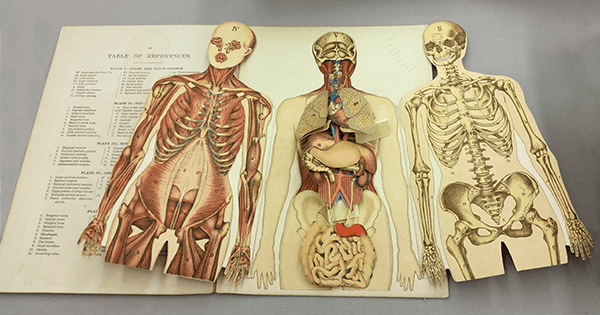
A “movable book” is more than a children’s pop-up; it’s an art form with an intricate history. During the Renaissance, scientists and mathematicians created books by folding and assembling paper (now called paper engineering) to examine human anatomy or illustrate natural laws in motion. In the 19th century, children’s literature underwent a revival in movable book design that is still under way today: pull tabs, liftable flaps, spinning paper disks, and the like.
Our methods for preserving texts online do not, however, generally address such books. Google Books, the world’s largest digital library, uses digitization methods—mechanical page-turners and algorithms that stretch the page flat—that do not allow for the digitization of movable books. Emily Brooks, a graduate student at the University of Florida in Gainesville, hopes to change that.
Drawing on technologies that have only recently become affordable for scholars, such as Photoshop, photogrammetry, and 3-D scanning, Brooks is building an archive of animated digital models of historical movable books from her university’s library and designing a methodology for scholars to use in other collections. She creates 3-D models, taking a series of photographs and using a turntable to rotate the book 360 degrees. She also creates animated GIFs using Photoshop, which specifies a timeline, frames, and seconds per frame. The results can be hosted on a library website or on public sites such as Sketchfab and Tumblr. “These digital methods are already used in art history, anthropology, and other fields,” she says. “In the English department, we have artifacts that should be looked at similarly.”
The next step, Brooks says, is to include 4-D, or volumetric, captures to create digital objects that the user can manipulate with a mouse. Later she hopes to use digital 3-D models and 3-D printing to build re-creations of books with bindings made of precious metals or gemstones, such as sacred books of the Middle Ages and Renaissance.
Explore a 3-D model of Robert Sabuda’s Alice in Wonderland:

